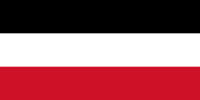National Liberation Front (South Yemen) facts for kids
Quick facts for kids National Liberation Front |
|
|---|---|

Flag of the National Liberation Front
|
|
| Active | 1963–1978 |
| Country | Protectorate of South Arabia (until 1967) |
| Allegiance | |
| Type | Guerrilla |
| Role | Guerrilla warfare |
| Garrison/HQ | Mountains of Yemen |
| Equipment | Small arms and dynamite |
| Engagements | Aden Emergency |
| Commanders | |
| Notable commanders |
Qahtan Muhammad al-Shaabi Jarallah Omar |
| Insignia | |
| Identification symbol |
Initials "NLF" |
The National Liberation Front (NLF; Arabic: الجبهة القومية للتحرير, romanized: al-jabhat al-qawmiyya lil-taḥrīr) was a political group and fighting force in what is now southern Yemen. It was active during the Aden Emergency, a time of conflict in the region.
The NLF fought against the British who were trying to create a new colony called the Federation of South Arabia. After the British left, the NLF took control. They defeated their rival group, the Front for the Liberation of Occupied South Yemen (FLOSY). The NLF later changed its name to the Yemeni Socialist Party. It then set up a government in what became the People's Democratic Republic of Yemen.
Contents
Why the NLF Formed
In the late 1950s, Gamal Abdel Nasser, the president of Egypt, promoted an idea called Pan-Arabism. This idea aimed to unite Arab countries. It worried Britain and the local leaders in the region.
To keep control, the British convinced different local leaders to join together. They formed the Federation of South Arabia. The Aden Trade Union Congress was a powerful group in this new federation. To balance their influence, the British added the Colony of Aden to the federation in 1962. This brought in more pro-British members.
A day after Aden joined, a civil war began in North Yemen. This war was between forces supported by Nasser, like the NLF, and those supported by Saudi Arabia and the British. This conflict spread and became known as the Aden Emergency. A state of emergency was declared in the State of Aden.
How the NLF Started Fighting
The NLF announced its revolution in the Federation of South Arabia in 1964. At this time, a new British government came to power. They wanted to give independence to the Federation of South Arabia. They planned to give control to Abdullah al Asnag's FLOSY group.
However, the American President Lyndon B. Johnson did not want Britain to leave. This was because the Americans were getting more involved in the Vietnam War. So, the plan for independence was stopped.
In 1965, the British took direct control of the Federation of South Arabia. Asnag realized he wouldn't get control and left the country. He then joined the NLF.
NLF and FLOSY Split
Some members of the NLF became more radical and broke away from the Egyptians. Asnag then formed his own military group, FLOSY, to oppose the NLF. The NLF quickly said that Asnag and FLOSY were working for outside powers. They started fighting FLOSY in addition to attacking the British.
By February 1967, the British could no longer control their bases in Aden. They announced they would leave the country, even though America disagreed.
In January 1967, there were big protests by NLF and FLOSY supporters in Aden. These protests lasted for weeks. British troops tried to stop them. Many attacks happened against the troops. An Aden Airways plane was also destroyed in the air. At the same time, NLF and FLOSY members were fighting and killing each other.
On June 20, 1967, soldiers and police in the Federation of South Arabia Army rebelled. British forces, especially the 1st Battalion Argyll and Sutherland Highlanders, helped restore order.
However, deadly attacks by the NLF against British forces soon started again. Nasser supported FLOSY and even arrested the NLF leader who was living in Egypt. Officially, both FLOSY and the NLF refused to talk to the British. But secret talks happened between the British and the NLF. They worked together to defeat FLOSY.
The British left Aden by the end of November 1967. This was earlier than planned. The last British governor of Aden, Sir Humphrey Trevelyan, left without handing over power to anyone. But as a sign of respect, he had the government house repainted for whoever would win.
NLF's Victory
On November 30, 1967, the Federation of South Arabia ended. The People's Republic of South Yemen was declared. In 1967, Israel defeated Egypt in the Six-Day War. This made Egypt pull its troops out of Yemen.
FLOSY, now without Egypt's military help, kept fighting the NLF. But the NLF convinced Yemen's Federal army to join them against FLOSY. On November 7, 1967, FLOSY tried to attack a federal army base. The army, with NLF's help, defeated FLOSY and caused them heavy losses.
After this defeat, FLOSY's fighting force broke up. Some leaders remained outside the country. By 1968, most of the opposing leaders made peace.
After the Civil War
Qahtan Muhammad al-Shaabi was president until June 22, 1969. Then, a more radical group within his own NLF took control. Salim Rubai Ali (Salmin) became the new country leader.
After the civil war in 1970, Saudi Arabia recognized the Yemen Arab Republic. A ceasefire was put in place. The NLF changed the name of South Yemen to the People's Democratic Republic of Yemen (PDRY) on December 1, 1970.
The NLF changed its name again in 1978 to the Yemeni Socialist Party (YSP). All other political parties were combined into the YSP. It became the only legal political party in the country.

